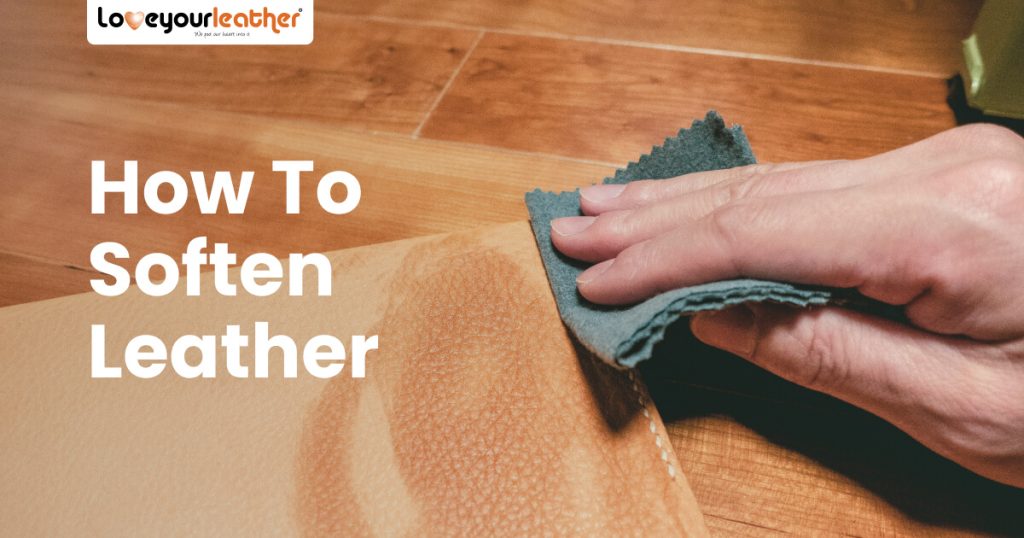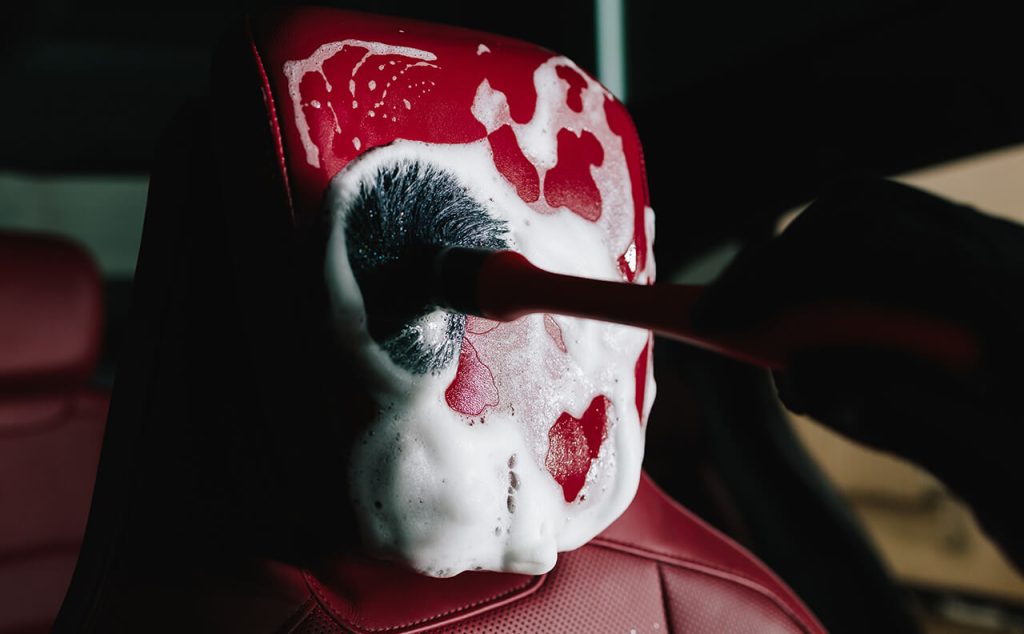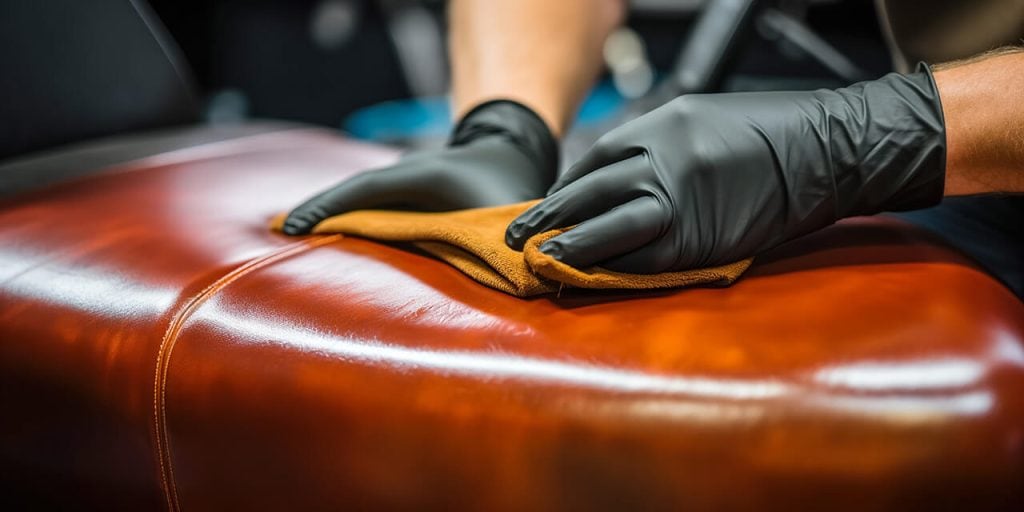How To Soften Leather (Without Damaging It): Expert Methods for Safe Care
Leather is one of the most beautiful and durable materials you can invest in when it’s maintained correctly. However, even high-quality pieces will gradually lose their softness when they’re exposed to dry air, sunlight, or long stretches without conditioning.

If your favourite leather item feels a little stiff and uncomfortable to use, there’s no need to panic. Softening leather is usually a simple process that just requires the right approach and a bit of patience. In this article, we’ll go into what actually causes leather to harden and explain how do you soften leather safely so your items stay smooth and flexible for years.
Why Leather Becomes Stiff Over Time and How It Affects Your Items
Leather is made from natural fibres that rely on oils and moisture to stay flexible. Over time, those oils slowly evaporate, especially if the leather is often exposed to dry air, indoor heating, sunlight, or frequent use without conditioning. As the fibres lose moisture, they tighten and stiffen, which is why your once-supple leather jacket or bag may start feeling rigid or less comfortable to handle.

Climate also plays a role in how your leather holds onto moisture. Cold winters and heated indoor spaces can pull moisture from leather much faster, while dry, summer weather can slowly pull oils from the surface and cause it to harden unevenly.
When leather reaches this point, it can feel rough, difficult to bend, and sometimes even squeak. If you ignore the stiffness for too long, cracks may form or the finish may weaken. Learning how to soften hard leather early can help you restore the material before permanent damage sets in.
How to Make Leather Soft: Proven Techniques That Work on Most Leather Items
While there are reliable steps you can follow to soften most leather, it’s helpful to remember that not all leather is the same. Each type has its own texture, finish, and level of sensitivity, which means some pieces may need a slightly different approach.

Before getting into those differences, here are the universal steps that work well for most leather items, followed by notes on how to adjust the process for specific types.
- Clean the leather first: Give the surface a light wipe with a damp cloth or use a mild leather cleaner. Removing dust, oils, and buildup helps conditioners work more effectively and prevents debris from getting trapped in the material.
- Apply a leather conditioner or softener: Once the leather is clean and dry, work a quality conditioner or leather softener into the surface using a soft cloth. This step puts moisture back into the fibres, which is the key to bringing back softness.
- Give the leather time to absorb the product: Let the conditioner sit for a while before handling the item again. Leather softens as it absorbs moisture, so this waiting period is important for getting good results.
- Gently flex the leather as it softens: Light bending or moving helps loosen the fibres without stressing the material. This step encourages a more even, natural softness throughout.
- Repeat the process if the leather is still stiff: Older or very dry leather often needs more than one round of conditioning. Reapplying the product gradually helps restore flexibility without overwhelming the material.
After taking care of the basics, it’s worth looking at the type of leather you’re dealing with. Some leathers absorb products quickly, while others need gentler handling or completely different methods. Below are simple notes on how to soften leather on the type you’re working with:
- Smooth and Finished Leather: This type of leather usually responds very well to conditioners. Full-grain, top-grain, and most finished leathers soften evenly as long as the product is applied in thin, even layers. If your item is coated or polished, it may take a little longer for the conditioner to soak in, so allow extra time between applications.
- Vegetable-Tanned Leather: Vegetable-tanned leather is naturally firmer and often used for belts and straps. It softens best when you use a small amount of oil along with gentle flexing. Work the oil in slowly and move the leather a bit as it absorbs. This helps the fibres relax without weakening the structure.
- Suede and Nubuck: These materials should not be treated with creams or oils. They absorb liquids too easily and can darken or stain. To soften suede or nubuck, use a suede-safe softening spray and follow with brushing to lift the nap. This keeps the texture looking fresh while improving flexibility.
- Upholstery Leather: Furniture and car interiors are usually made from finished leather, but because they cover large surfaces, they need more careful application. Apply conditioner lightly and work in small sections to avoid streaks or patchiness. Let each area dry before moving on to the next.
- Patent, Bonded, and Faux Leather: These materials do not soften the same way natural leather does. Patent leather has a shiny coating that prevents traditional conditioners from sinking in, and bonded or faux leather is made from synthetic materials. At most, you can clean and lightly condition the surface to keep it looking smooth, but it will not develop the same softness as real leather.
Signs Your Leather Needs Professional Care Instead of DIY
While everyday leather maintenance is easy to manage yourself, some signs indicate it’s time to call in a professional. When leather becomes fragile or shows early damage, DIY methods can sometimes make the problem worse without you realizing it.

- Visible cracking along the surface: Cracks often mean the leather has dried out far beyond what conditioner can repair. Trying to bend or soften it at this stage can make the cracks spread or deepen.
- Peeling or flaking finish: When the top layer begins to lift, it usually points to a breakdown in the coating. This type of damage needs specialized restoration to prevent further peeling.
- Large dark stains or discoloration: Deep stains often react poorly to household cleaners. Using the wrong product can make the mark darker or spread it across a larger area.
- Mould or mildew spots: Moisture-related growth should be handled carefully. Professionals have the right tools to remove mould safely and prevent it from coming back.
- Leather that feels brittle or paper-like: If the leather no longer bends easily, attempting to flex it at home can cause permanent creasing or tearing. This level of dryness needs controlled restoration.
Give Your Leather the Professional Care It Deserves
Softening leather is mostly about understanding what the material needs and giving it the right kind of attention. Once you understand why it becomes stiff and how different types respond to softening, it becomes much easier to keep your favourite items in good shape. With the right products and a little patience, most leather can regain its flexibility and the soft, supple texture it had.
If your leather needs expert attention, Love Your Leather has the tools and experience to restore it safely. We handle everything from deep cleaning to conditioning and refinishing, and we’ve been trusted by customers across Toronto and the surrounding areas for many years. Our facility is fully equipped for large items, delicate materials, and premium brands, and we offer convenient pickup and delivery services. Fill out our online form and get a free quote today.








